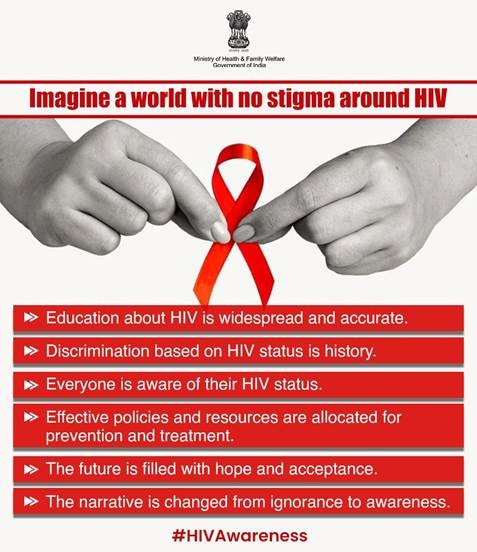Description

Source: Hindu
Disclaimer: Copyright infringement not intended.
Context
- The spotlight has returned on high sugar content in flavoured malt-based milk powders and baby food.
- Government authorities are warning against branding such items as “healthy” and have called out the allegedly misleading promotion and marketing tactics while loading products with added sugar.
Details
FSSAI's Stand on Sugar Content
- In its Food Safety and Standards (Advertising and Claims) Regulations 2018, the Food Standards and Safety Authority of India (FSSAI) has established guidelines regarding the permissible sugar content in food products and the associated health claims.
- Criteria for 'Low Sugar' Claim:
- According to FSSAI regulations, a product can claim to be 'low on sugar' only if its total sugar content is less than 5g per 100g.
- Products meeting this criterion may potentially be considered 'healthy,' as they contribute less sugar to the overall diet.
- Concerns with Misleading Marketing:
- FSSAI emphasizes the importance of accurate labeling and advertising, particularly for products marketed as 'health drinks.'
- If products fail to meet the 'low sugar' criteria but still advertise themselves as 'health drinks,' it raises concerns about misleading consumers regarding the nutritional content and health benefits of these products.
Why are Sugary Processed Foods Harmful?
- High Sugar Content:
- Exceeding recommended sugar intake levels, especially for children, can contribute to obesity, type 2 diabetes, dental problems, and other health issues.
- Consuming four servings of a sugary drink could result in a child exceeding the World Health Organization's recommended daily sugar intake threshold of 25 grams or six teaspoons.
- Empty Calories:
- Sugary processed foods typically lack essential nutrients such as vitamins, minerals, and fiber.
- Consuming these foods can lead to nutritional deficiencies and undermine overall health and well-being.
- Blood Sugar Imbalance:
- High sugar intake causes rapid spikes in blood sugar levels, followed by crashes, leading to energy fluctuations and cravings.
- Chronic blood sugar imbalance increases the risk of insulin resistance, metabolic syndrome, and diabetes.
- Dental Health Concerns:
- Sugary processed foods promote tooth decay and dental cavities, particularly when consumed frequently or in large quantities.
- Bacteria in the mouth feed on sugars, producing acids that erode tooth enamel and lead to dental problems.
- Contribution to Chronic Diseases:
- Excessive sugar consumption is associated with an increased risk of chronic diseases, including cardiovascular disease, certain cancers, and cognitive decline.
- Processed foods high in sugar often contain unhealthy fats, additives, and preservatives, further exacerbating health risks.
Controversy Over Baby Food
- The Wheat Apple Cherry baby cereal contains 24 grams of total sugars per 100 grams, derived from ingredients such as milk solids, maltodextrin, and dextrose.
- Feeding infants and toddlers such high levels of sugar on a daily basis raises concerns about the long-term health implications, including the risk of obesity, type 2 diabetes, and dental problems.
- Babies are primarily accustomed to the taste of breast milk, which contains lactose, a naturally occurring form of sugar that is less sweet.
- Introducing complementary foods with excessive sugar content at a young age can disrupt metabolic processes, putting undue strain on the pancreas and potentially leading to insulin resistance, diabetes, and obesity later in life.
- Addition of ingredients like maltodextrin to improve flavor and texture of baby food products is criticized due to its high glycemic index (GI), which can cause rapid spikes in blood sugar levels.
- Excess sugar consumption can lead to the conversion of glucose into triglycerides, contributing to the development of fatty liver and insulin resistance, both of which are risk factors for diabetes.
Public Health Implications
- The prevalence of diabetes in India is a significant concern, with an estimated 101.3 million people affected, according to a study co-published by the Indian Council of Medical Research.
- Early exposure to high sugar content in baby food products can exacerbate the diabetes epidemic and increase the burden of diet-related diseases in the population.
Effectiveness of FSSAI Probe in Curbing Misleading Labels
- In September 2022, FSSAI released a draft notification defining high fat, sugar, salt (HFSS) food and proposed warning labels on front-of-the-packaging to alert consumers about such products.
- The notification aimed to address concerns related to excessive consumption of sugar, saturated fat, and sodium, which are associated with adverse health effects.
- Despite the draft notification, concerns remain about the open-ended nature of regulations regarding the declaration of fat, sugar, and salt content on product packaging.
- FSSAI's preference for 'health rating stars' over warning labels has sparked debate, with critics arguing that health stars may not effectively convey the nutritional quality of products to consumers.
Regulatory Insights
- As per the Food Safety and Standards (Foods for Infant Nutrition) Regulations, 2019, sugar is permissible in milk cereal-based complementary foods but under specific conditions.
- Lactose and glucose polymers are preferred carbohydrates, while sucrose and fructose should only be added if necessary as carbohydrate sources, not exceeding 20% of total carbohydrates.
- The Infant Milk Substitutes Act prohibits the promotion of infant foods through advertisements.
- This regulatory measure is designed to safeguard infant health by preventing misleading or inappropriate marketing practices that may influence feeding choices.
|
Corporate Partnerships in Nutrition Programs:
- Hindustan Unilever Limited's annual report for 2022 revealed a collaboration with the Zilla Parishad of Pune.
- The partnership aimed to enhance the nutritional value of midday meals by incorporating Horlicks, positioned as a 'health food drink,' into take-home rations distributed to children across 4,600 anganwadi centers, benefiting approximately 1.45 lakh children aged between three and six.
|
Way Forward
In light of the observations regarding sugar content in milk cereal-based complementary foods and the regulatory framework outlined in the Food Safety and Standards (Foods for Infant Nutrition) Regulations, 2019, there are several steps that need to be taken to address the existing challenges and ensure the well-being of consumers:
- Re-evaluation of Regulations:
- The regulations currently allow for the inclusion of sugar in milk cereal-based complementary foods, provided certain criteria are met.
- There is a need to review and potentially revise these regulations to align with evolving nutritional standards and public health concerns.
- Defining 'Healthy' and 'Unhealthy' Foods:
- Develop comprehensive regulations that clearly define what constitutes 'healthy' and 'unhealthy' foods across all food and beverage categories.
- This includes revisiting the draft notification on front-of-pack labeling and high fat, sugar, salt foods to ensure it reflects stakeholder feedback and addresses industry practices.
- Addressing Marketing Practices:
- Strong action is needed to address misleading marketing practices, particularly concerning infant foods and beverages.
- Enforcement of existing regulations, such as the Infant Milk Substitutes Act, is crucial to prevent the promotion of infant foods via advertisements and combat illegal advertising tactics.
- Enhancing Regulatory Oversight:
- Strengthen regulatory oversight to ensure compliance with existing regulations and address instances of non-compliance.
- Collaboration with industry stakeholders and government agencies is essential to develop effective regulatory frameworks and enforcement mechanisms.
- Public Awareness and Education:
- Launch public awareness campaigns to educate consumers about reading labels, understanding nutritional information, and making informed choices.
- Provide information on the risks associated with excessive sugar consumption, especially in children's diets, and the importance of adopting healthy eating habits.
- Accountability and Transparency:
- Ensure transparency in regulatory processes and decision-making, including stakeholder consultations and feedback mechanisms.
- Hold accountable those responsible for misleading marketing practices and take decisive action against illegal advertisements and promotional activities.
Must read articles:
Sugar, FSSAI
Sources:
EconomicTimes
|
PRACTICE QUESTION
Q. The effectiveness of an FSSAI probe in curbing the practice of misleading labels depends on various factors, including the regulatory framework, enforcement mechanisms, and industry compliance. Examine. (250 Words)
|











